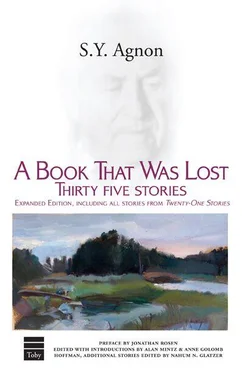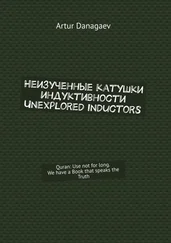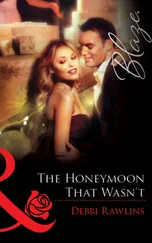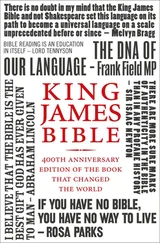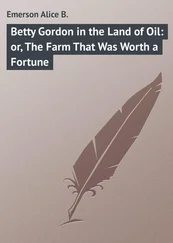S. Agnon - A Book that Was Lost
Здесь есть возможность читать онлайн «S. Agnon - A Book that Was Lost» весь текст электронной книги совершенно бесплатно (целиком полную версию без сокращений). В некоторых случаях можно слушать аудио, скачать через торрент в формате fb2 и присутствует краткое содержание. Издательство: Toby Press Ltd, Жанр: Современная проза, на английском языке. Описание произведения, (предисловие) а так же отзывы посетителей доступны на портале библиотеки ЛибКат.
- Название:A Book that Was Lost
- Автор:
- Издательство:Toby Press Ltd
- Жанр:
- Год:неизвестен
- ISBN:нет данных
- Рейтинг книги:3 / 5. Голосов: 1
-
Избранное:Добавить в избранное
- Отзывы:
-
Ваша оценка:
- 60
- 1
- 2
- 3
- 4
- 5
A Book that Was Lost: краткое содержание, описание и аннотация
Предлагаем к чтению аннотацию, описание, краткое содержание или предисловие (зависит от того, что написал сам автор книги «A Book that Was Lost»). Если вы не нашли необходимую информацию о книге — напишите в комментариях, мы постараемся отыскать её.
A Book that Was Lost — читать онлайн бесплатно полную книгу (весь текст) целиком
Ниже представлен текст книги, разбитый по страницам. Система сохранения места последней прочитанной страницы, позволяет с удобством читать онлайн бесплатно книгу «A Book that Was Lost», без необходимости каждый раз заново искать на чём Вы остановились. Поставьте закладку, и сможете в любой момент перейти на страницу, на которой закончили чтение.
Интервал:
Закладка:
9
Much time has passed since my bar mitzvah, and I’ve traveled far since I first wore my tefillin. Many times, exhausted by the ravages of life, I was too rushed for deep prayer so I would put on my tefillin for a brief prayer. On my head the tefillah was like a tired bird wanting to perch quietly but who is forced to move by arrows that are aimed at it.
Once, during the Ten Days of Repentance — before the conflagration — I asked a scribe to inspect my tefillin. I never knew if Rabbi Elimelech, of blessed memory, had written them in his youth or in his old age, and in any event, since they were more than a hundred years old and had rested in plenty of tefillin bags and had been used by many hands, perhaps the writing had been effaced and the letters had become indistinct. When the scribe returned them to me, he said: I am astonished by the gentleman’s tefillin. I asked why. He said: Even though the writing is old, it looks as though it were written today. Does the gentleman know who inscribed them? I said to him: And if I tell you his name, are you familiar with my locale? He said to me: Nonetheless, tell me. I said to him: Rabbi Elimelech the Scribe. He said to me: Do you mean Rabbi Elimelech of Buczacz who lived in the days of the great Tzaddik of Buczacz, may their honor protect the people of Israel? I nodded yes. He said: Since I mentioned their names, let me tell you what I have heard about them. I said: After all, they’re from my own city and it would please me greatly, since I love to hear even simple things about simple men from my home, all the more so about two righteous men like them. So the scribe told me a story about a righteous man on whose tombstone were inscribed the words ABRAHAM OUR FATHER THE Tzaddik and DAVID OUR KING as an allusion to the dead man, Abraham David, may his worthiness protect us. There was in town a wanton troublemaker who went to the authorities and told them that the Jews had rebelled against them and had crowned a king for themselves. The authorities dispatched an agent to investigate. When the agent came to inspect the tombstone, instead of DAVID OUR KING he found written DAVID OUR FING, and the Jews were saved because to be imprisoned in Buczacz could be a catastrophe. And the Jews were well aware that a great miracle had occurred when the agent found “fing” instead of “king,” since “king” was what had originally been written. Now, the residents of Buczacz are deep thinkers and they quite naturally love to do research and search for explanations for everything, so they started an inquiry to discover who had switched the K to an F. One man finally rose and said: Do you remember the handwriting of Rabbi Elimelech the Scribe, of blessed memory? The rest responded: Of course we recognize his handwriting. This very day we read in the synagogue from a Torah that was written by Rabbi Elimelech, and the F on the tombstone is identical to the F ’s in his Torah. And so everyone then knew that even in the world hereafter Rabbi Elimelech had not forgotten his children. And the scribe also said to me: Does the gentleman know that it is a tradition among us that no man who wears tefillin written by Rabbi Elimelech ever suffers a divorce? I told him that I knew that. He asked me: Is the gentleman married? I answered: Thank God. He took a deep breath and sighed. I never knew why he sighed, whether it was because he did not have the pleasure of a peaceful house or because at that particular time his business of writing tefillin was dwarfed by the writing of divorces. In any event, not every scribe manages to be like Rabbi Elimelech and not every man is worthy of wearing the tefillin of Rabbi Elimelech.
10
One night I dreamed that I put on the tefillah for the arm but not for the head, and the dream upset me a bit. During the course of the day additional anxieties entered my life and I forgot my dream until the Master of Dreams caused it to recur. I went to a wise man and told him my worry. He said: Do you know what I would suggest? That you’re getting signs that your tefillin have to be inspected for flaws. I said to him: I’ve had them inspected and there are no flaws. So he had no response. When the dream occurred a third time, I said to myself that there must be something to this. I convened a panel of three judges and told them my dream. I saw a look of concern on one of their faces but I paid it no heed. Some people are melancholy and some are cheerful. But in fact I couldn’t get my mind off the tefillin even when I wasn’t saying my prayers, like when I would see them hanging in their bag on the wall and I would go over and anxiously touch them to make sure that I had not placed them in their bag improperly. But they were always in their rightful place and in their proper order. One time I discovered that the bands of the head tefillah were not properly tied, so I stood there and tied them, as I always did, in the shape of a dove’s wings. The next day I discovered that the wings were spread like the wings of a dove who wants to fly from its nest. A short time later my house burned down, and the tefillin burned with it. I don’t know if I was a victim of the evil eye or one of those judgment decrees that comes upon a man suddenly. The Lord giveth and the Lord taketh away.
11
The day of perfection has not yet arrived in this world, so I went and bought new tefillin. Once again I did not buy a pair made out of a single piece of leather. In fact, I bought the first pair that I saw. My wife took some cloth that had not been consumed by the fire and made from it a kind of tefillin bag, not of silk this time, and with no silver lettering. No cakes and wine were offered in honor of the day; a piece of bread was sufficient. True, I did wear new clothes, but that was because all of my old clothes had burned in the fire.
When I came to the synagogue and put on my tefillin, my friends did not look on with disapproval, nor did they bombard me with words. On the contrary, they sympathized with one whose house had burned and who did not have a roof over his head. Pay no mind to his new clothes, his old ones all burned; even his tefillin burned and that’s why he’s wearing new ones. I folded my tallit over my head so as not to hear their comments. When I got to the prayer that tells of God opening His hand and satisfying all living beings, I raised my hands to feel my tefillin. I was reminded of how I used to touch my old tefillin, and I thought to myself that those old ones were like a charm that let me live peacefully, and the new ones were to make sure that no one would envy me. I took a breath and sighed. This too is for the best.
The Artist in the Land of Israel
~ ~ ~
If Agnon can be said to have invented himself as a modern Jewish writer, then these stories define that identity. From a tale of the would-be writer as a young man in Jaffa to stories that contrast the figure of the writer to his peers and his predecessors, we see a variety of narrative self-portraits. These are “self-portraits” only in the broadest sense: they give narrative form to the writer’s understanding of himself, his community, his art, and the Jewish past. These portraits are often heavily shaded by irony: the writer mocks his presumption in even designating himself with the title sofer , the Hebrew term for “writer,” which also refers to the scribes responsible for the transcription of Scripture. How can he take on this title, he asks, when he does not devote himself to the full-time study of traditional texts? In the range of these stories, we gain access to a variety of personae of the writer, with the result that our portrait of the artist resists reduction to any one component.
In “Hill of Sand,” a story set in Jaffa in the years of the Second Aliyah, we encounter the writer as a young man unable to write, to love, to work. (“Hill of Sand” went through a number of revisions, dating from the early story “Tishre,” a tale of unrequited love, written in 1911 in Jaffa, and culminating in the 1931 text of “Hill of Sand” which is the basis for this version.) Agnon lets us feel the atmosphere of the period from the perspective of the youthful Hemdat, who witnesses the founding of Tel Aviv from afar, but does not engage in physical labor or join in the enterprise of Jewish settlement. Themes of ambivalence are signalled by Hemdat’s repugnance for the physical side of life. He is drawn to Yael Hayyut, whose last name, derived from the Hebrew word for “life,” suggests a vitality, a life force, that Hemdat longs to share.
Читать дальшеИнтервал:
Закладка:
Похожие книги на «A Book that Was Lost»
Представляем Вашему вниманию похожие книги на «A Book that Was Lost» списком для выбора. Мы отобрали схожую по названию и смыслу литературу в надежде предоставить читателям больше вариантов отыскать новые, интересные, ещё непрочитанные произведения.
Обсуждение, отзывы о книге «A Book that Was Lost» и просто собственные мнения читателей. Оставьте ваши комментарии, напишите, что Вы думаете о произведении, его смысле или главных героях. Укажите что конкретно понравилось, а что нет, и почему Вы так считаете.
